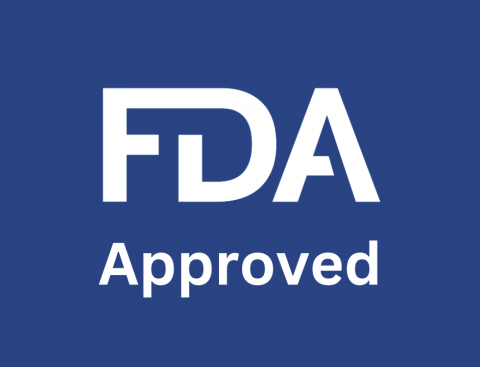By Dr. Shipra Gandhi
Roswell Park Comprehensive Cancer Center
Endocrine therapy is the mainstay of the management of hormone receptor (HR) positive breast cancer. Until now, fulvestrant remained the only selective estrogen receptor degrader (SERD) approved for the treatment of advanced HR-positive breast cancer. ESR1 mutations represent an important mechanism of resistance to aromatase inhibitors1. Elacestrant is a novel oral SERD that selectively binds to the estrogen receptor (ER) in breast cancer cells, inhibiting tumor growth. The FDA recently approved elacestrant for postmenopausal women or adult men with ER-positive, HER2-negative, ESR1-mutated advanced or metastatic breast cancer with disease progression following at least one line of endocrine therapy based on results from the EMERALD study. The FDA also approved the Guardant360 CDx assay as a companion diagnostic device to identify patients with breast cancer for treatment with elacestrant.
The EMERALD clinical trial was an international phase III trial comparing the safety and efficacy of elacestrant with the standard of care endocrine therapy. 477 patients were randomized to receive elacestrant 400 mg daily or the investigator’s choice of endocrine treatment with fulvestrant or aromatase inhibitors. ESR1 mutation was detected in ctDNA using the Guardant360 CDx assay. All patients had progressed on prior CDK4/6 inhibitors, and no more than one prior line of chemotherapy was allowed. Among all patients, PFS on elacestrant was prolonged with a median PFS of 2.8 months vs. 1.9 months on the standard of care with a hazard ratio (HR) of 0.70 (95% CI, 0.55-0.88). This difference in PFS was more pronounced among patients with ESR1-mutant disease with a median PFS of 3.8 months with elacestrant vs. 1.9 months with the standard of care with HR of 0.55 (95% CI, 0.39-0.77). There was a greater benefit observed with elacestrant among patients with a longer duration of response to CDK4/6 inhibitors. The median PFS was 3.8 months among patients who received at least 12 months of CDK4/6 inhibitors in the metastatic setting vs. 1.9 months in the standard of care group. This benefit was even higher among patients with ESR1-mutant disease with a median PFS of 8.6 months vs. 1.9 months among patients treated with standard of care. Elacestrant efficacy in participants with ESR1 wild-type (ESR1wt) breast cancer was limited, with a PFS HR of 0.863 (95% CI, 0.628-1.186). A pre-specified interim analysis similarly showed a trend toward improved OS in ESR1-mutant breast cancer (HR 0.59; P = 0.03, nonsignificant) but not in ESR1wt breast cancer (HR 0.92; P = 0.69). This lack of survival benefit in those with ESR1wt tumors, and the fact that the PFS benefit in the overall population was driven by the ESR1 subgroup, may have led the FDA to limit the approval of elacestrant to ESR1-mutant advanced breast cancer. Patients treated with prior fulvestrant continued to show benefits with elacestrant. Elacestrant was generally well tolerated, with the main side effect being upper gastrointestinal symptoms and fatigue2,3. These findings are in line with data presented from the SERENA-2 trial where most of the clinical benefit of camizestrant, another oral SERD, was limited to patients with ESR1-mutant disease and to those with ER-driven tumors, defined as tumors that continued to respond to CDK4/6 inhibitors for 12 months or beyond4.
The EMERALD trial tested elacestrant as a monotherapy agent. Whether elacestrant may be used safely and effectively in combination is unknown. The umbrella trial ELEVATE (NCT05563220) will study elacestrant in combination with CDK4/6 inhibitors, PI3K inhibitor alpelisib, or mTOR inhibitor everolimus. Given the challenging safety profiles of combination treatments, elacestrant can be considered as an important oral endocrine monotherapy agent in the 2nd/3rd line setting, especially in an endocrine sensitive population who had prolonged benefit to upfront CDK4/6 inhibitors and have ESR1-mutant and PIK3CA WT disease where alpelisib is not indicated or is contraindicated.
REFERENCES:
- Jeselsohn, Rinath, et al. “ESR1 mutations—a mechanism for acquired endocrine resistance in breast cancer.” Nature reviews Clinical oncology10 (2015): 573-583.
- Bidard, Francois-Clement, et al. “Elacestrant (oral selective estrogen receptor degrader) versus standard endocrine therapy for estrogen receptor–positive, human epidermal growth factor receptor 2–negative advanced breast cancer: results from the randomized phase III EMERALD trial.” Journal of Clinical Oncology28 (2022): 3246-3256.
- Bardia, A., et al. “EMERALD phase 3 trial of elacestrant versus standard of care endocrine therapy in patients with ER+/HER2-metastatic breast cancer: updated results by duration of prior CDK4/6i in metastatic setting.” Proceedings of the SABC(2022).
- Oliveira, M., et al. “Camizestrant, a Next-Generation Oral SERD vs. Fulvestrant in Post-Menopausal Women with Advanced ER-Positive HER2− Negative Breast Cancer: Results of the Randomized, Multi-Dose Phase 2 SERENA-2 Trial.” 2022 San Antonio Breast Cancer Symposium. 2022.





